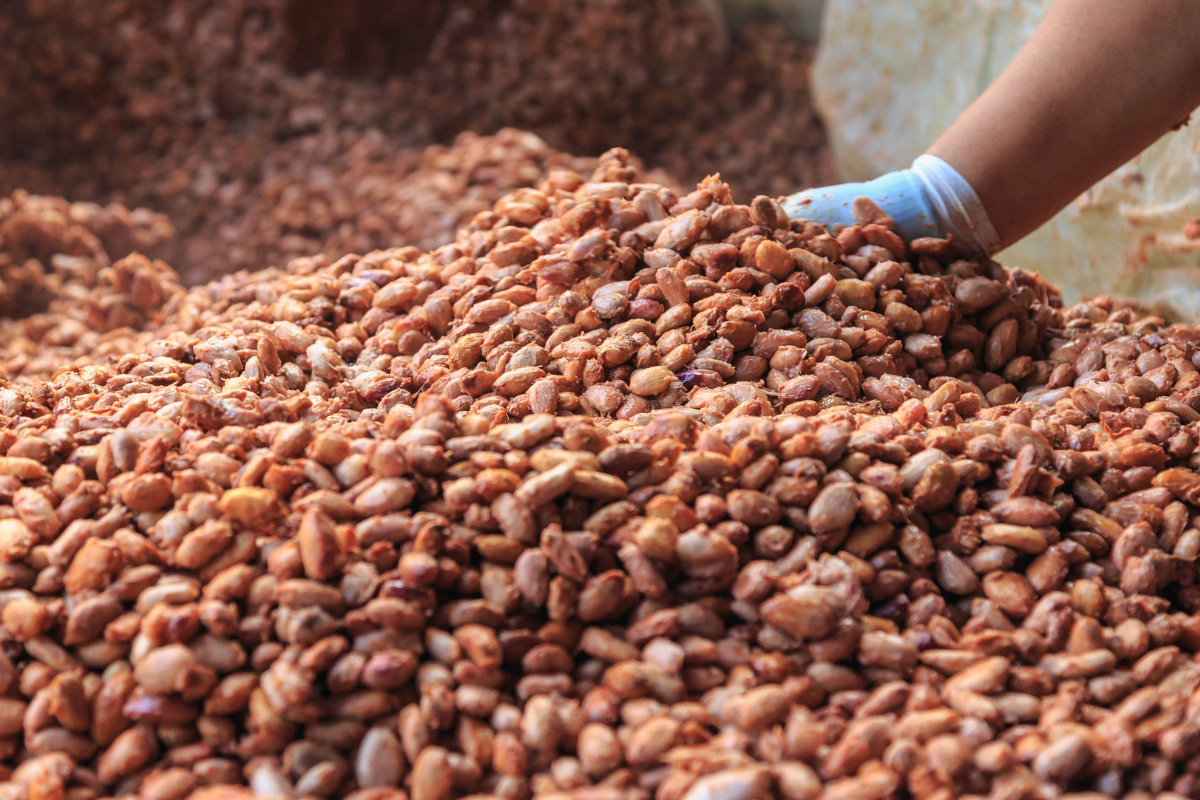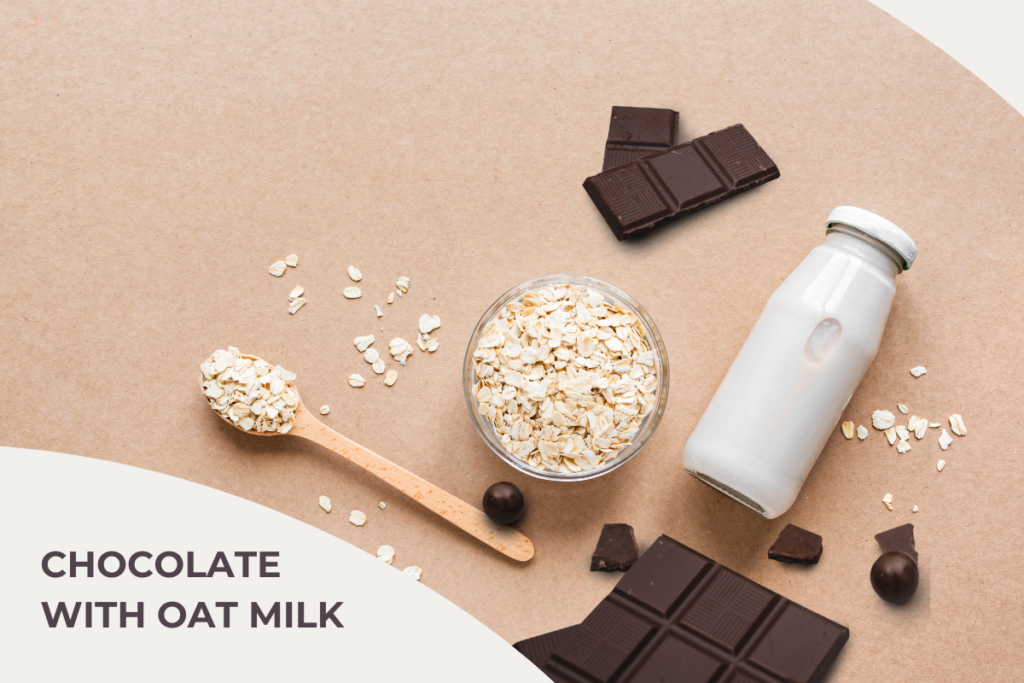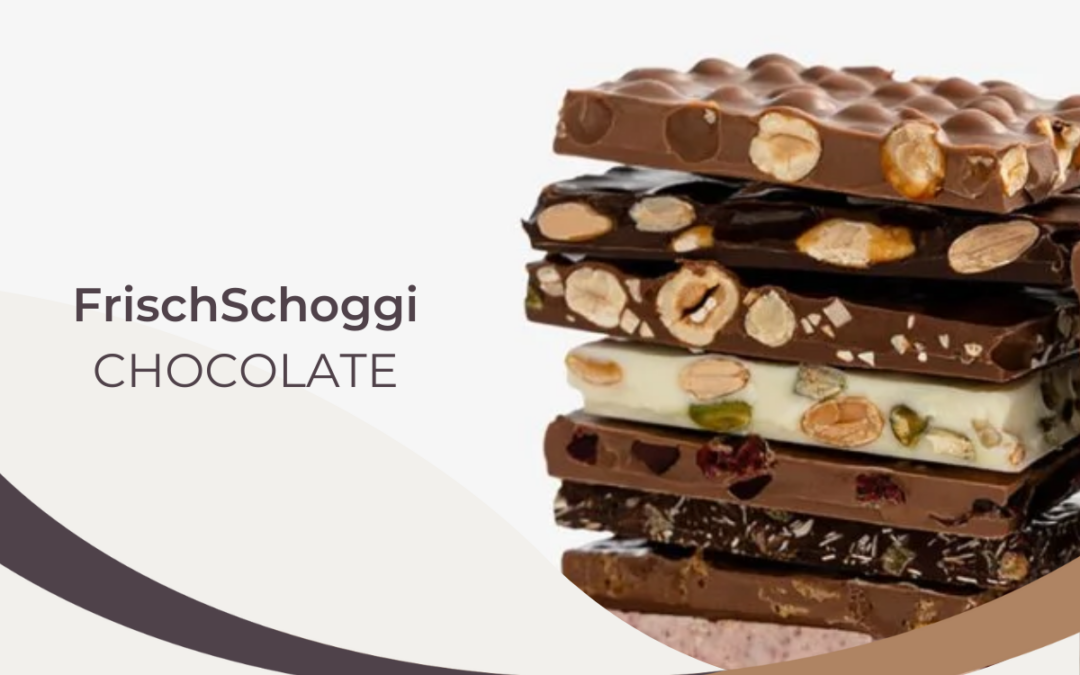Yes! Chocolate is a fermented food! The fermentation process is a crucial step in transforming raw cacao into the delightful chocolate we love. It plays a vital role in developing chocolate flavor and complexity, but what exactly occurs during this process? Keep reading to find out all about this crucial step in chocolate making.
Why is cacao fermented?
Cocoa beans are fermented to make cacao taste good and have the right balance of flavor and acidity. The fermentation process develops the chocolate flavor precursors. Some people even say that without fermentation, chocolate wouldn’t have very good flavor (although there are some cultures that use unfermented cacao). The raw purple cacao beans are very bitter and astringent if eaten fresh. The fermentation process transforms these harsh characteristics and makes them more palatable.
During what step of the chocolate-making process are cocoa beans fermented?
Cocoa beans go through fermentation on or near the farm, before the chocolate-making process has officially begun. This is unlike the wine industry where the farmer is only responsible for growing the grapes, while the wine maker is responsible for fermenting them. In this case, the farmer is responsible for growing, harvesting and fermenting the cacao. First, when cocoa pods are picked, they’re opened, and the beans, still covered in their pulpy coating, are removed. The fermentation happens when these beans, still in the pulp, are piled up in heaps or put in fermentation containers. During this time, tiny micro-organisms, such as yeasts and bacteria, start the fermentation process. The fermentation process, along with special chemical reactions that occur within the beans, helps to create the chocolatey taste that we love so much. After fermentation, the beans are dried, roasted, and turned into chocolate.
How does cocoa fermentation work?
Here’s the interesting thing: it’s not the beans themselves that get fermented – it’s the baba, the juicy white pulp around them that actually feeds the fermentation process. Yeast and bacteria help transform this sweet pulp by breaking down the sugar and turning it into alcohol (like in wine making). The bacteria then break down the alcohol and turn it into acids (similar to making vinegar). The beans go through physical and chemical changes because of heat, alcohols, acids and enzymes that soak into them during this process.
Here’s a step-by-step explanation of how cacao fermentation works:
Step #1 – Harvesting
Cacao pods are harvested from the cacao tree when they are ripe.
Step #2 – Opening the Pods
The pods are cut or cracked open to reveal the cacao seeds which are surrounded by a sweet, white pulp.
Step #3 – Bean and Pulp Removal
The seeds or beans, covered in white pulp, are extracted from the pods by hand.
Step # 4 – Fermentation
The beans, along with their pulp covering, are put in containers or piled up into heaps on the forest floor. This is where the magic begins. The yeasts and bacteria, found in the air, on banana leaves or purposely added, start the fermentation process. The pulp starts to break down over a week’s time.
Step # 5 – Heat Generation
As fermentation goes on, the pile of beans gets warm. This, along with special reactions from enzymes, is super important for creating the desired taste and smell of premium chocolate. The beans are usually mixed or dumped from bin to bin once or twice during the fermentation process.
Step # 6 – Changes in Beans
The beans change in both their texture and their chemistry during fermentation. The first thing that happens, is that the bean (really a seed) is killed so that it doesn’t germinate. As the byproducts of the fermentation soak into the flesh of the bean, it loses its harshness and bitterness, and starts to take on the delicious chocolatey qualities we desire.
Step # 7 – Duration
Fermentation usually goes on for 5-7 days, and how long it lasts can affect the chocolate flavor. Under-fermentation and over-fermentation will both result in poor quality chocolate.
Step # 8 – Drying
After fermentation, the beans are laid out in the sun to dry. If the beans are dried too fast, they won’t have a chance to release their acidity and that might make the chocolate taste more sour. Reducing the water content of the beans during the drying process is critical for keeping the beans stable for storage and the next steps in making chocolate. Damp beans can result in mold and mildew growth.
Is it possible to ferment cocoa beans at home?
Yes, it is possible to “micro-ferment” cocoa beans at home, but it’s crucial to understand that the fermentation process for cocoa is pretty specialized and needs specific conditions for the best results. Fermenting cocoa involves controlling parameters like temperature, humidity, and microbes; it can be tricky to recreate these conditions in a home setting, since the volume is so small, but it can be done.
If you want to try fermenting cocoa beans at home, you can do it in a small Styrofoam cooler. Cover the fermenting seeds with banana or heliconia leaves to keep in the heat and moisture (they are also a good source of natural yeast). You can use any large non-toxic leaf or something like waxed paper. Decide if you are going to inoculate with yeast or go with the wild yeast that are on the leaves used to wrap the beans. During normal fermentation, the seeds can get up to around 120°F or a bit higher. In a small batch, you might need to place them in the oven on low heat to reach those temperatures. White-seeded Criollo beans finish fermenting in 2-3 days, while purple-seeded Trinitario and Forastero types take about 7-8 days to complete the process. Properly fermented cacao seeds change from white or purple to a consistent brown color, and then they are called “cocoa beans.”
If you decide to ferment cocoa beans at home, we’d love to know about it! Share your experience with us on social media.
We hope you enjoyed reading this article and gained insights into the fermentation process. As consumers, understanding this process gives us the knowledge to make informed choices, appreciating the subtle flavors that expertly fermented cocoa beans bring.
For more great articles and recipes, check out the rest of our CocoTerra blog. If you have any questions or comments, feel free to contact us through our social media channels. We are @cocoterra_co on Instagram and Pinterest and @cocoterraco on X (aka Twitter) and Facebook.







